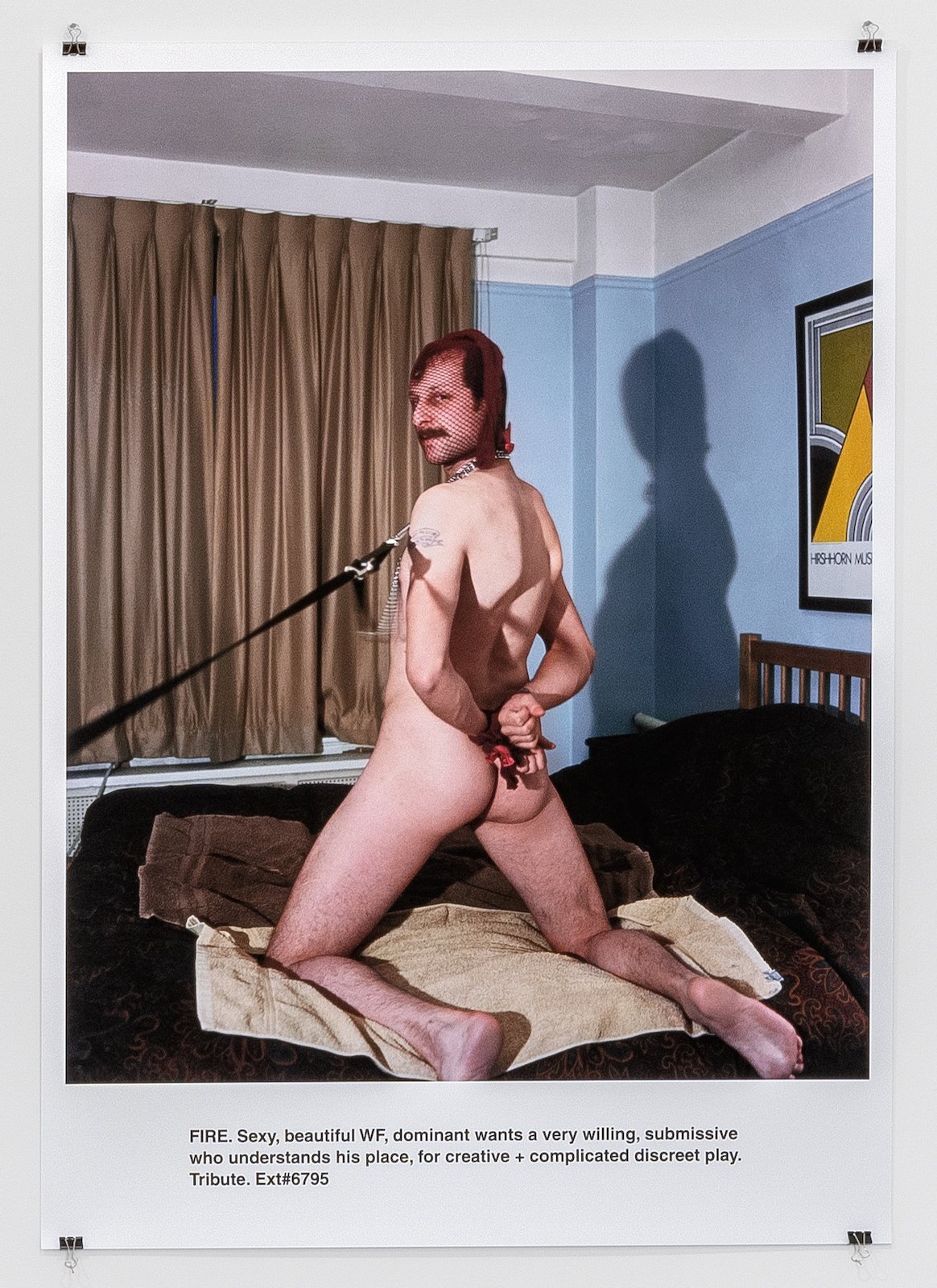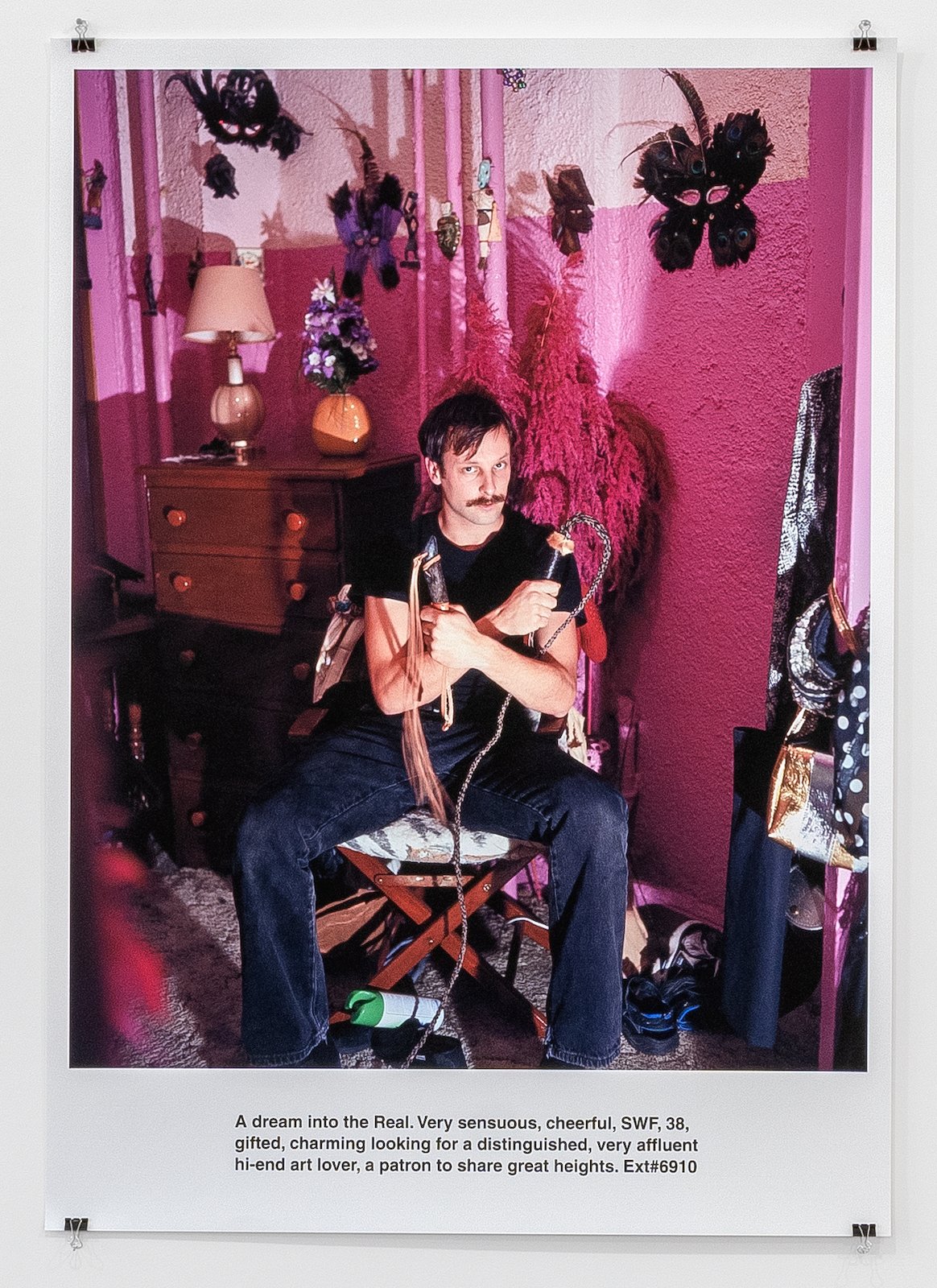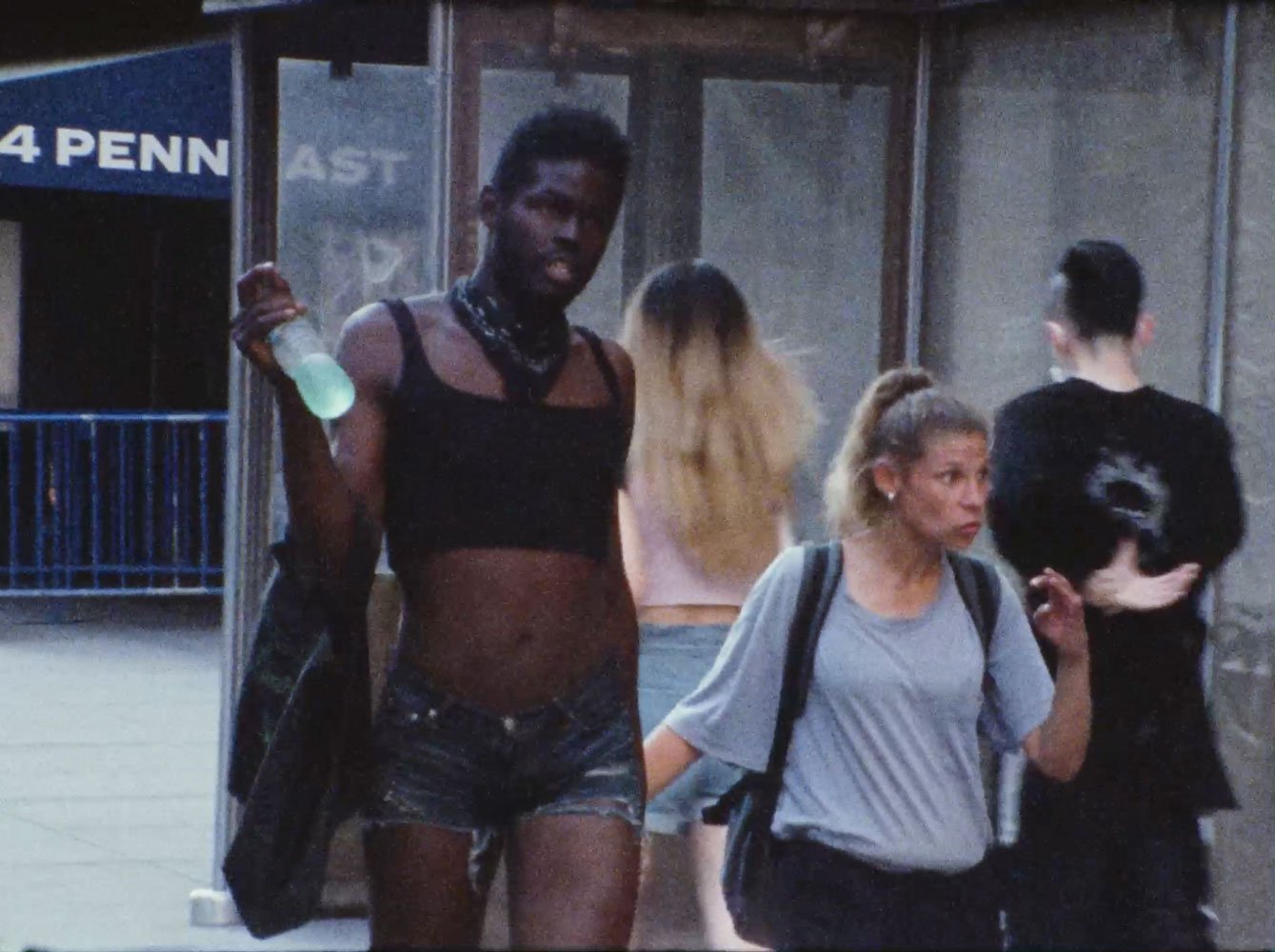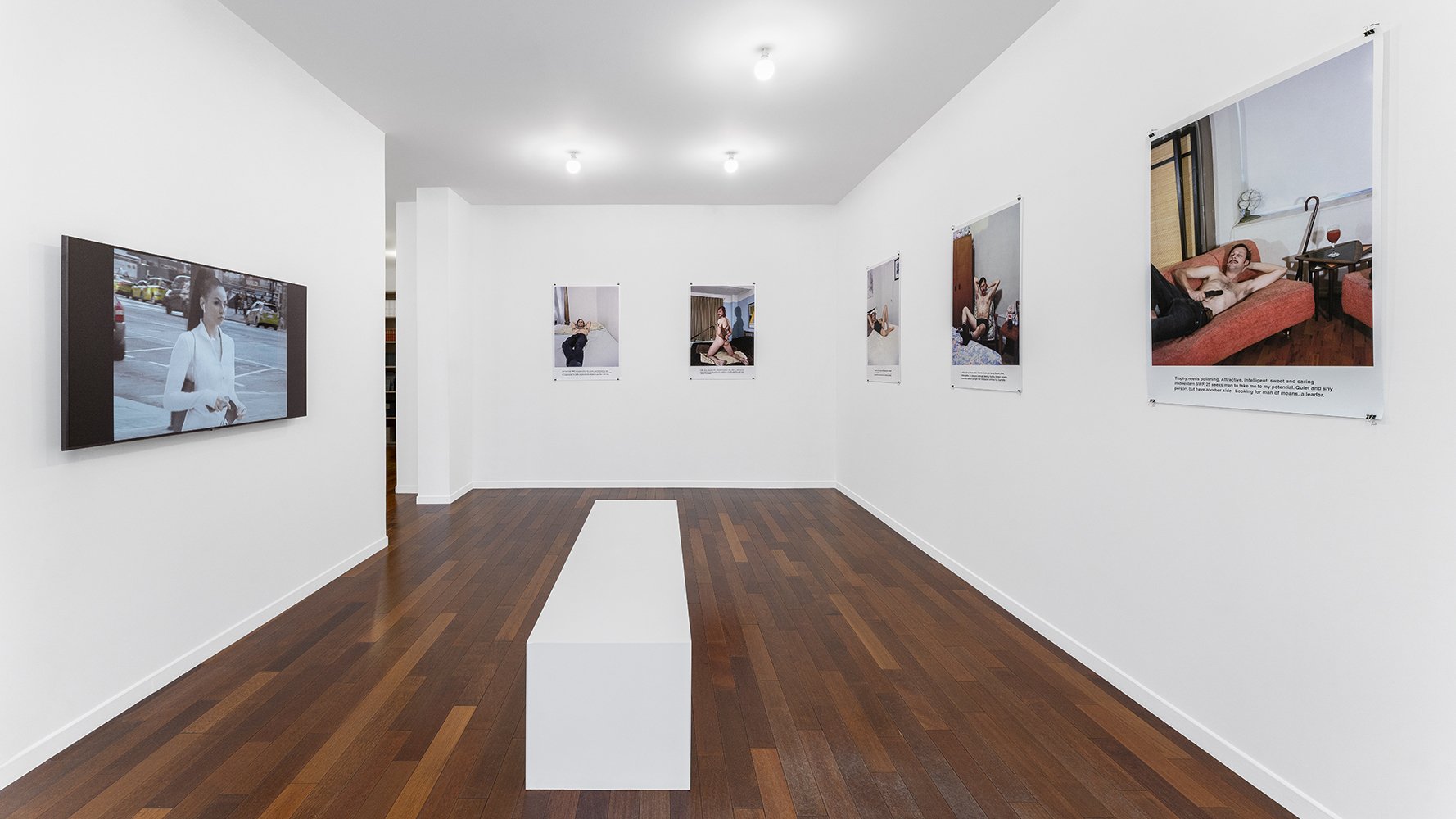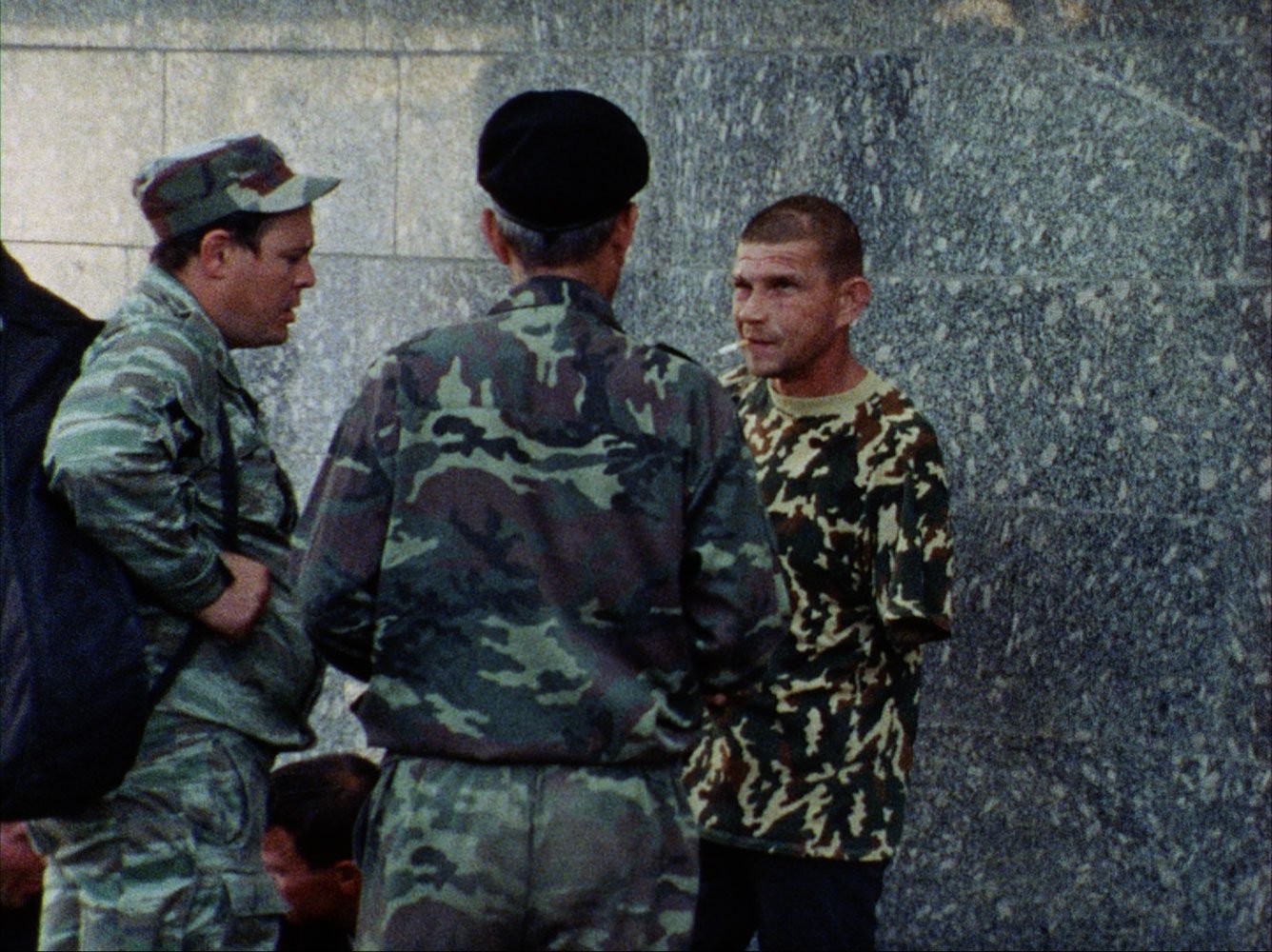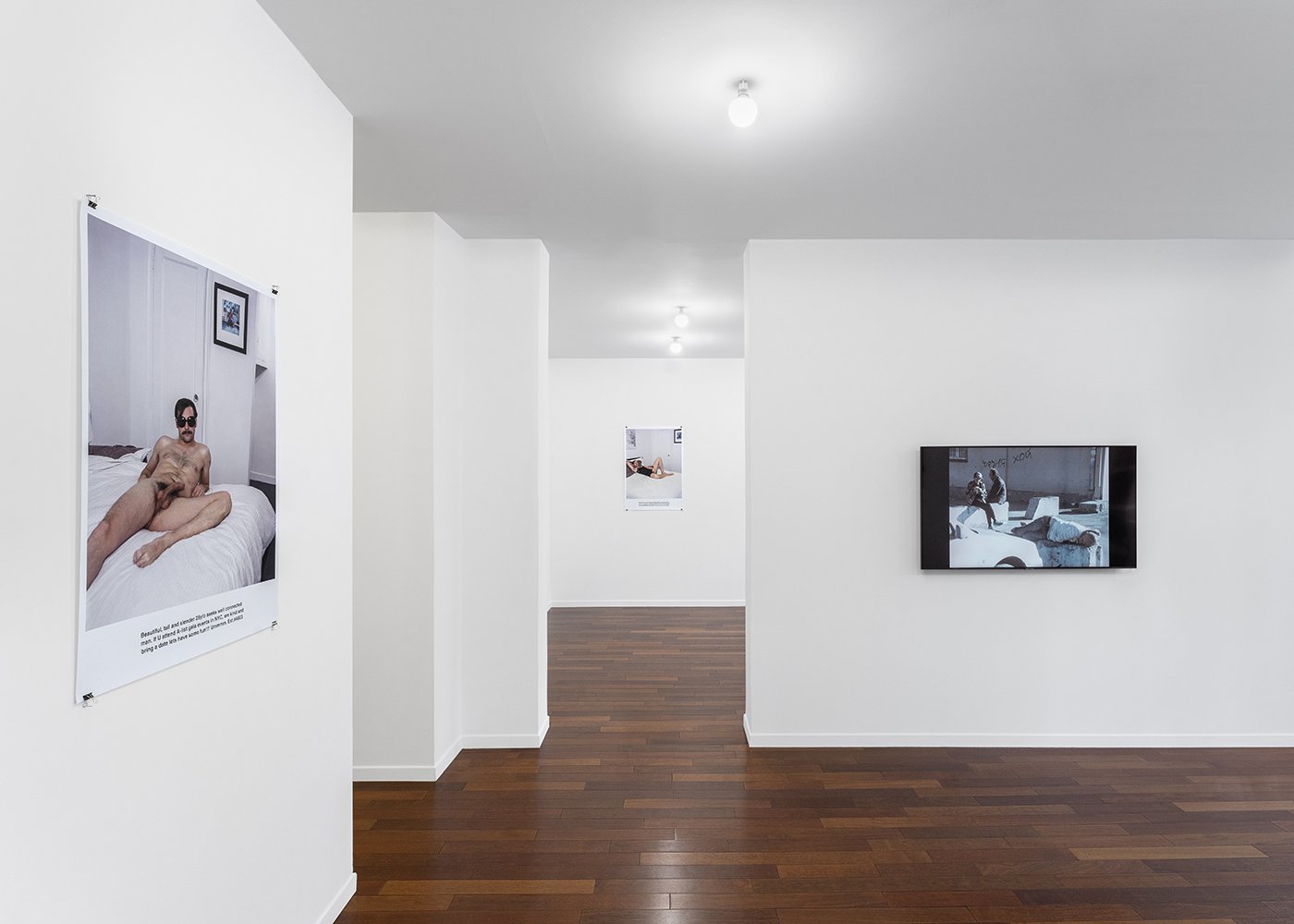For the exhibition, Leigh Ledare wrote an intimate, first-person press release, included here in its entirety.
“‘Mother died today. Or maybe it was yesterday, I don’t know.’
— Albert Camus, L’Etranger
My work was first introduced to the artworld through a series titled Pretend You’re Actually Alive. A chronicle of my family, this project centered around my mother – a dancer who at age thirteen began a career with the New York City Ballet only to find herself, at almost fifty, in a relatively provincial city dancing at a strip club next door to her parents’ apartment. On the surface this was a story of disappointment; however, not completely. She carried a humor about herself and an appetite for the absurd. And while her performance of sexual desire acted to address certain needs (financial, emotional and otherwise), her assertions toward my camera also largely amounted to a refusal of expectations put upon her – namely, her father’s opinions concerning how she should behave as a daughter, mother and woman of her age.
While my work has since shifted in unexpected directions, it remains recursive. Perambulating around an ever-widening space, it circles back to themes that are intersubjective and often symptomatic.
As I contemplated what to include in this exhibition and began considering a title, I recalled a phrase I came across a number of months ago: “To you who make the spring, I send my winter.” Albert Camus had penned this inscription inside a personalized copy of his final novel The Fall, a gift for the painter Balthus. Infamous for fetishizing the fleeting innocence and nascent sexuality of the young girls who modeled for his paintings, Balthus continuously reinvented himself, ultimately creating his own feudal paradise sequestered high in the Swiss Alps where he could safely personify the values of Traditionalism and order he believed had been ravaged by modernity. Of course, his views must be taken with a grain of salt. In contrast, the anarchistic Camus, who was raised in a working class neighborhood in Algiers by a mother who was unable to read, placed absurdity and chaos at the center of his work, railing against forms of mechanized thought he deemed intellectual suicide. Loaded with contradictions, and serving as an uncanny mirror onto our own times, Camus’ epigram seemed an apt analogy for the works I will present here.
Installed surrounding the periphery of the gallery’s two rooms ten poster-scale photographic portraits of me address the viewer – through eyeline, posture and text.
After finishing the work with my mother, I increasingly found her presence overbearing. Compelled to return to an earlier moment, or possibly escape that current one, I sought out surrogates to stand-in for her. I made a series that I called Personal Commissions by answering “Women Seeking Men” listings that echoed the ads she herself had placed in the back pages of weekly periodicals. Vowing to protect their users’ anonymity, these ads nonetheless inscribed their subjects into a system of exchange – a space of compartmentalized intimacy through which to solicit sexual encounters and circulate one’s self amongst strangers willing to give small amounts of financial compensation and hopefully more. I contacted these women and offered to pay each her asking fee, adding one caveat: rather than sleeping with me, she would instead photograph me inside her apartment, positioning me in whatever way she desired – standing, sitting or lying prone, clothed or unclothed, erect or not. Inverting the camera by substituting myself for these subjects, I took up a promiscuity of positions – reconfiguring the relations between mother and son; escort and john; and between artist, model and viewer. Ultimately, these portraits of me function as ciphers. Contrasting the women’s confessed ambitions against the circumstances of their actual lives, these works point indirectly to structures of consumption, affirmation and judgement that determine value.
The revolving subjects of figuration; the painter’s muse; my mother, then and before; the women from these listings and me; and even Balthus – while these represent false equivalents, they are nonetheless strangely interchangeable. In each case, implicated by their circumstances, what innocence they had has been chipped away by passing time.
With Camus inscription in mind, my thoughts continued to return to his collaboration with Balthus, who designed the sets and costumes for the 1948 allegory State of Siege, a play by Camus that concerns the arrival of plague and an authoritarian regime’s manipulation of fear to amass power. In contrast to Balthus’ desire to transcend the present and withdraw into the innocent world of childhood, Camus’ work presents no sufficient escape. Contrasted with the fantasy of Balthus’ spring, Camus’ reality reduces us to witnessing our own submission under the crisis of history.
Vokzal and NA JA – a pair of films presented here back to back on the central wall dividing the gallery’s two rooms – remain elusive in their simplicity. Shooting on 16mm in slight slow motion, I used the sprawling public space surrounding two train station complexes – first in Moscow and then New York, during the summers of 2015 and 2020 respectively – as a rubric for mapping latent social dynamics. The effects of the two films are cumulative. As a heterotopia, the station is not only a symbol of mobility but a threshold through which the cultural peripheries and economic centers of these societies converge. These social microcosms present a constellation of diverse actors passing through, working in, loitering around or policing this public zone, inside of which the cohabitation of transgression, authority and quotidian routine mirrors the fractures of social hierarchy. An entire ecology runs below the surface of these images, a before and after and beyond the frame.
If in 2015, Vokzal’s stark scenes of Putin’s Russia served as a premonition for the rise of authoritarianism in America – a force that has come to create irreparable tears in the fabric of society – by the plague summer of 2020 this crisis had reached its apex. NA JA confronts us with an iteration of our world where assumptions about mobility have been retracted, a city where those with the privilege to leave have left, and those who have been left behind are reduced to a state of complete immobility. Already depicting advertisements for the arrival of a new station complex, these scenes are destined to be replaced. The new station will cater to the consumer, will be sanitized and policed, chaos having conjured control. In the interim, the city appears as a stage, the removal of commuters throwing into relief what remains – a theater populated by ungovernable parts of ourselves, aspects which, as a collective social body, we almost can’t bare to see.
Bodies circling from station to station within the station. Bodies standing, lying, clothed or unclothed. Bodies which, relegated from the center to the periphery, and from the public to the private, are either desired or desperately avoided. Bodies which, forced to live out their private experience in public, implicate us. Despite our desires to freeze time, one only has to look into the mirror to understand how absolutely futile that is.”
— Leigh Ledare (March 24, 2022)
To you who make the springtime, I send my winter is on view through May 21 @ Michèle Didier 66 rue Notre-Dame de Nazareth, 75003 Paris

